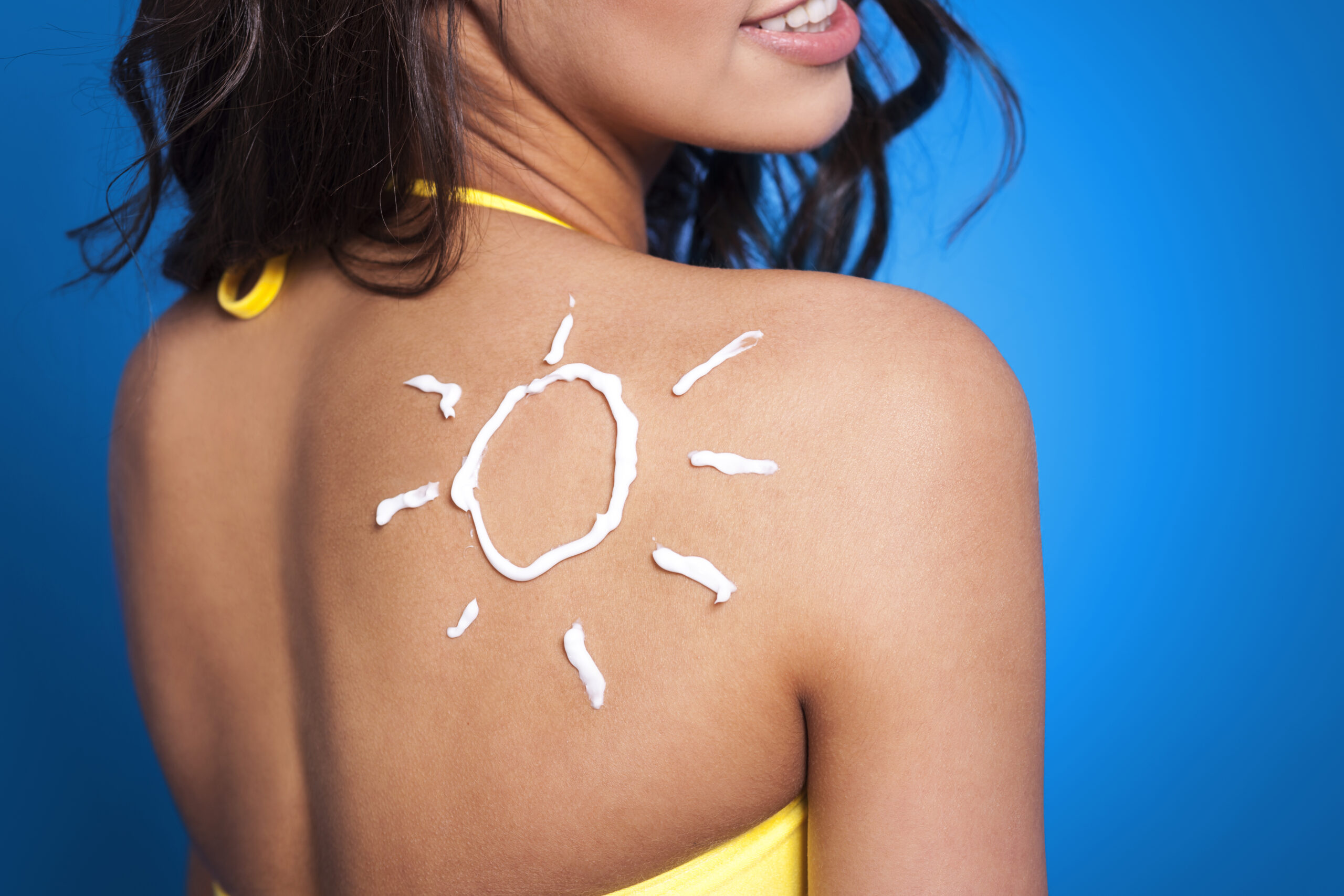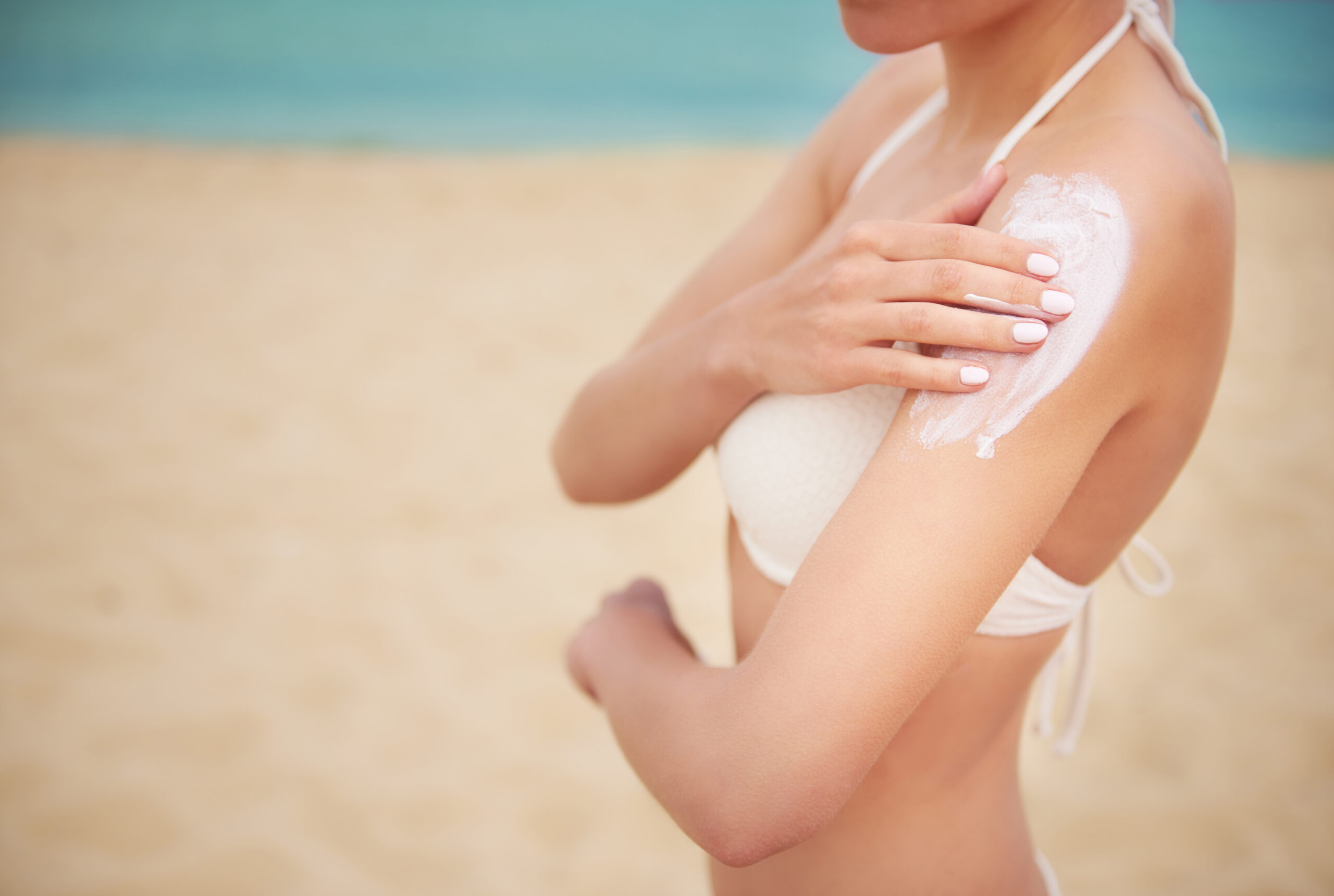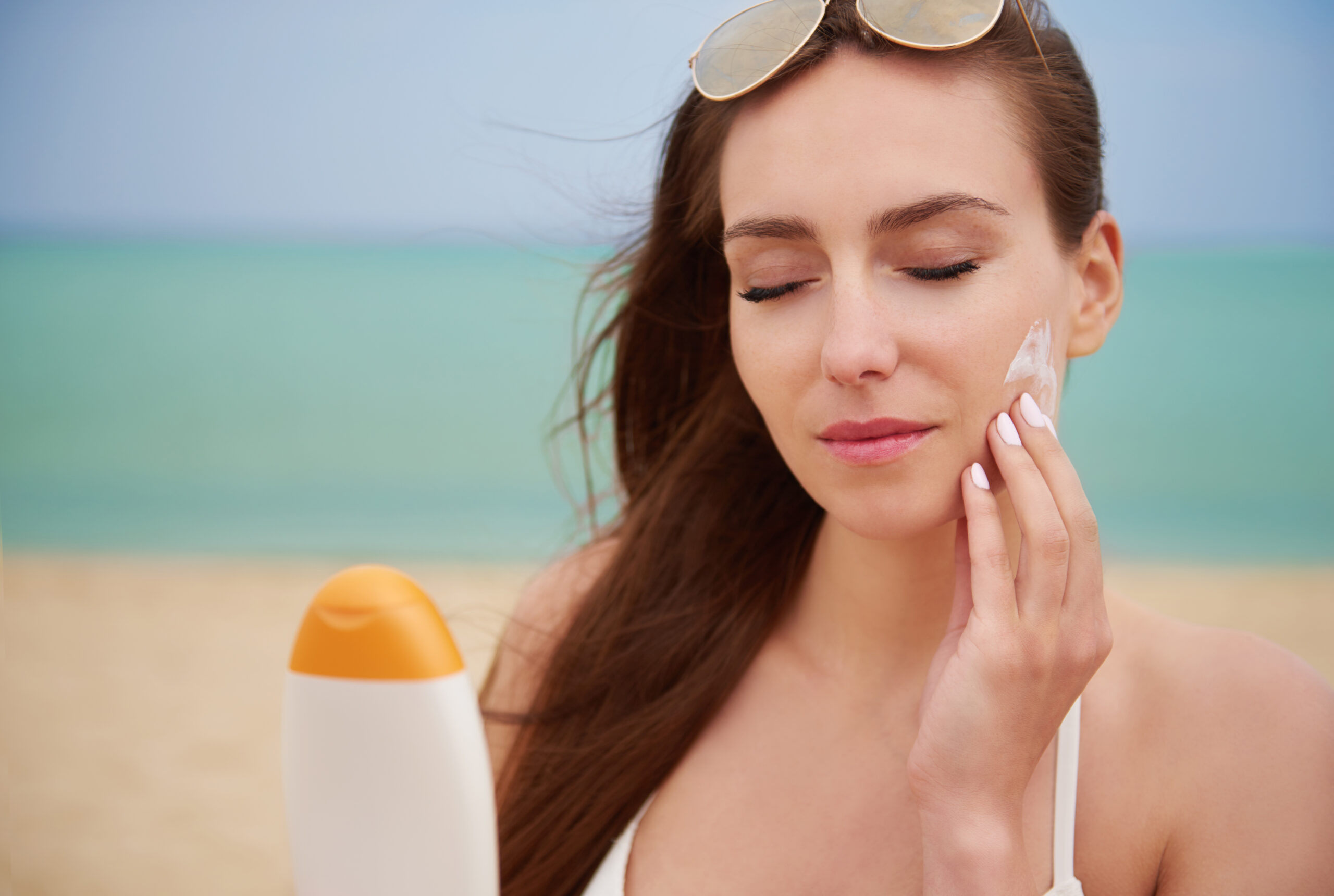SPF measures how much solar energy is needed to create sunburn on protected skin, comparable to the quantity of solar energy demanded to make sunburn on unprotected skin. As the SPF value rises, sunburn protection boosts.
SPF is not directly connected to the time of solar exposure but to the quantity of solar exposure. Although solar energy amount is connected to solar exposure time, other elements influence the quantity of solar energy.
For example, it takes less time to be exposed to the same quantity of solar energy at noon, corresponding to early morning or late evening, because the sun is more severe at midday relative to the other periods.

When choosing a sunscreen with SPF![]() , you may face a dilemma about buying the type. There are typically three types available:
, you may face a dilemma about buying the type. There are typically three types available:
Sunbathing sounds innocent, but remember that tanning is also a potentially dangerous activity. Here’s why:
Melanin![]() , or skin pigment, also found in the choroid of the eye and hair, is responsible for the change in skin color under the influence of sunlight. Although we are not fully aware of it, the tan on our skin plays primarily a defensive function and is an individual reaction of the skin to the possibility of sunburn in its deep layers. The amount of melanin in the skin determines our ease of sunbathing and the risk of sunburn.
, or skin pigment, also found in the choroid of the eye and hair, is responsible for the change in skin color under the influence of sunlight. Although we are not fully aware of it, the tan on our skin plays primarily a defensive function and is an individual reaction of the skin to the possibility of sunburn in its deep layers. The amount of melanin in the skin determines our ease of sunbathing and the risk of sunburn.
Dermatologists have identified six different skin phototypes![]() based on how the skin reacts to UV radiation. Thomas B. Fitzpatrick classified these types by observing skin reactions after 30 minutes of sun exposure at noon.
based on how the skin reacts to UV radiation. Thomas B. Fitzpatrick classified these types by observing skin reactions after 30 minutes of sun exposure at noon.
This skin type has minimal melanin, resulting in fair skin with a pink hue, prone to irritation and redness. People with this skin type, often with blond or red hair and blue eyes, are highly susceptible to sunburn and should avoid sunbathing.
This type also has fair skin but with a milky rather than pink shade, often seen in individuals with blond hair and blue eyes. While they tan poorly and burn easily, they can achieve a light tan with frequent and short sun exposure.
Phototype III is characterized by more melanin in the skin compared to the first two types. It provides greater resistance to sunlight. This is still a fair type of complexion in a golden or slightly swarthy shade. People with this skin type usually have dark blond, light, and medium brown hair, and their eyes are hazel, blue, green, brown, or grey. In the initial tanning phase, a slight redness of the skin may appear, but it rarely turns into a burn. Achieving a brown tan is easy for this phototype.
People with this type of complexion typically have dark or olive skin, dark brown or black hair, and hazel, green, or brown eyes. Their skin tans easily and quickly with a low risk of sunburn. The high melanin content in their skin acts as a barrier to sunlight, but it also poses a risk of premature aging and wrinkles. Therefore, these individuals must use SPF 20 or SPF 15 sunscreens throughout the year.
Phototype V is naturally well-protected from solar radiation. It tans very easily and quickly and hardly ever burns.
This phototype refers to dark brown or black skin that tans deeply and never gets sunburned.
Remember to determine your skin phototype as it helps decide how long you should tan or protect yourself from sunburn. Regardless of your complexion, don't overdo tanning![]() , and use proper sun protection.
, and use proper sun protection.

When choosing a cream, consider whether the product has a broad spectrum of action. This means that the cream blocks UVA and UVB rays![]() , while a regular sunscreen only protects against UVB radiation. So since both types of radiation are harmful, choosing a product that protects us from both is worth it.
, while a regular sunscreen only protects against UVB radiation. So since both types of radiation are harmful, choosing a product that protects us from both is worth it.
No sunscreen can be completely waterproof. For a product to be called this, it must be specified whether it will last 40 or 80 minutes of sweating or swimming. For this reason, to get the best results and ensure effective protection, when spending time in the sun, you should apply sunscreen every 2 hours or even more often (especially when swimming).
If you are wondering what sunscreen to choose for your face, one with waterproof properties may not be the best. The organization explains that if you do sports that can cause sweat to run into your eyes, the SPF filter can end up with the sweat.
SPF 50 provides around 98% protection against UVB rays, as opposed to around 96.7% protection provided by SPF 30. An SPF above 50 will only give slightly more protection – no SPF can provide 100% protection for your skin. For most everyday situations, SPF 30 is adequate protection, but only when applied correctly – so SPF 50 remains a safer option for preventing sun damage.
When choosing a cream with a filter for everyday use, consider several factors![]() :
:
The cosmetics market offers photoprotective products with different formulas, allowing you to choose a cosmetic tailored to your skin's current needs.
Remember that even creams that provide the highest protection protect against harmful UV radiation for a few hours. To ensure high sun protection throughout the day, SPF cosmetics![]() should be applied several times a day. While applying a cream to the body several times is nothing challenging, it can be problematic for women to refresh the sun protection of the face after applying makeup.
should be applied several times a day. While applying a cream to the body several times is nothing challenging, it can be problematic for women to refresh the sun protection of the face after applying makeup.
In the case of dry skin, apply a moisturizing cream and only then SPF to the face. When both cosmetics are absorbed, you can apply makeup. For oily skin, it is often enough to use just a cream with a filter under makeup. An alternative solution may be BB creams with sun protection. Such a cosmetic is a protective cream, moisturizing, and a delicate foundation. There are good BB creams with a filter on the market, that evening out the skin tone, moisturizing and blocking UV rays.
Photoprotection is important all year round, but especially in the spring and summer, during periods of high sunlight, sunscreen must be included in daily care.
An obstacle to properly using products with a filter can also be too small an amount of the cosmetic applied. Manufacturers of UV protection creams test them in laboratory conditions, applying the right amount – 2 mg for every 1 square centimeter of skin. Only such an application allows you to achieve SPF protection at the level guaranteed by the manufacturer.

A method that is not 100% effective but is quick and works for many people is measuring the cream with two fingers. However, in this case, the risk of applying too little product still exists because other factors also affect it, such as the consistency of the product. If we want to be more precise, we can use the ellipse formula by substituting the dimensions of our face (length and width).
If we do not want to measure our face and then measure the right amount of cream, in the case of light, runny formulas, we can repeat the application after a while using the two-finger method. In the case of such consistencies, the cream should not roll on the skin.
When using UV protection products in the morning and replicating them during the day, we must remember to cleanse the skin well in the evening.
An SPF face cream should be used under makeup all year round. Currently, there are cosmetics available that can be selected for every skin type. Protective creams, used in the right amount, are the best anti-aging prophylaxis. That is because UVA radiation accompanies us all year round (even on cold, cloudy days), and the skin of your face is not indifferent to its effects.
In the summer and winter, apply a cream with a filter to other body parts. The sun has a more intense effect at altitude and also reflects off snow and ice—protection of the skin (its exposed parts) is therefore mandatory.